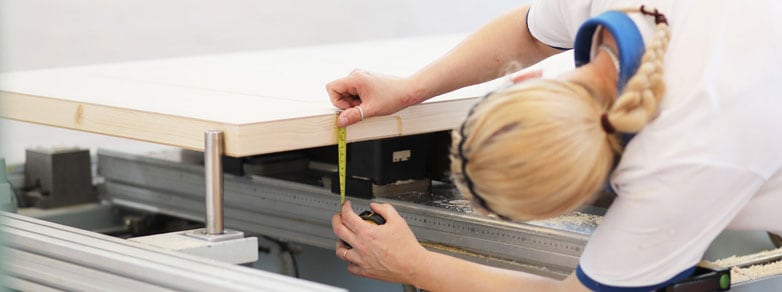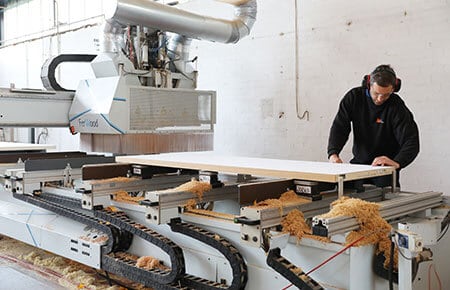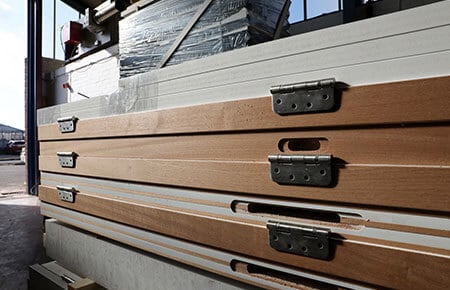Multiple studies have concluded that sound pollution in our homes can have a pretty dire effect on both our mental and physical wellbeing. Whether we’re working from home or at the office, the distraction of unwanted noise can also have a negative impact on our productivity levels.
If traffic, neighbours or the general hustle and bustle of life are the source of nuisance noise, the biggest culprit for letting this menace into a room is usually the door.
Fortunately, there are a number of methods to soundproof a door, ranging from inexpensive, easy-to-install, budget options right through to highly effective professional solutions.
Use a Rug and Other Soft Furnishings
These days, many of us opt for hard wood flooring that uses materials like laminates, tiles and hardwoods – and these tend to reflect more sound than they absorb. If the source of the noise is an adjoining room, adding a rug at the doorway and maybe some other soft furnishings (or even hanging canvas pictures) in the adjoining space could help minimise this effect.
Pros:
- Easy to implement
Cons:
- Minimal reduction in noise
- Not a full door soundproofing solution
Sound Absorbing paint
Sound-absorbing or acoustic paint typically boasts up to a 30% reduction in mid-range frequency sound, such as low level human conversation, but is less effective in other frequency ranges.
Acoustic paint can be used on walls, ceilings and doors, and can usually be overpainted to match the room décor.
Pros:
- Relatively inexpensive
- Only basic DIY skills required to use
- Up to 30% reduction in mid-range frequency noise
Cons:
- Less effective in other frequency ranges
- Can be a messy job for less experienced painters
- Not a full door soundproofing solution
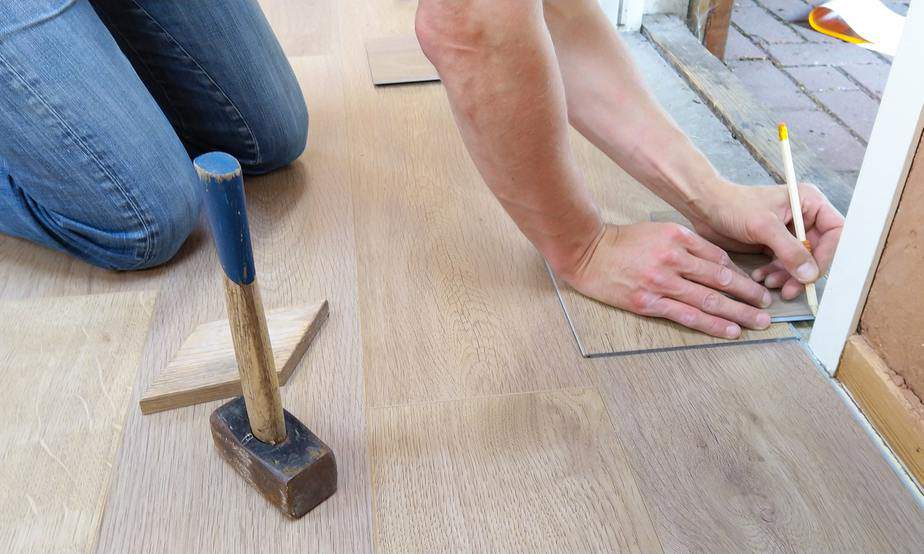
Fill Any Gaps Between the Door and Frame
Having gaps around the door is a major cause of excessive noise entering a room.
To check for gaps, switch off all lighting in both adjoining rooms, and – with the door closed – have a helper shine a flashlight around the edges of the door while you check for light on the other side. Where you can see light is where the gaps are – and where sound can leak in.
There are a number of solutions to solve this issue at various price points. In addition to soundproofing, these solutions can also stop drafts and reduce heating bills.
Weatherproofing strips
Weather proofing strips or tape is generally used on external doors but can be used on internal doors for soundproofing purposes too.
This self-adhesive product is applied to the door frame on the face that the door closes against. Typically made from a soft neoprene, the strip compresses and forms a seal when the door closes against it.
This product is available in a variety of colours that can closely match common door colours.
Pros:
- Inexpensive
- Easy to fit
- Variety of colours available
- Hidden when door is closed
Cons:
- Can wear and/or peel off over time
- Not aesthetically pleasing
- Not a full door soundproofing solution

Soundproofing rubber
Soundproofing rubber may be a better solution than weather proofing strips for wider gaps.
This product works and is applied in much the same way as the strips, but is available in a range of different dimensions to suit your needs. This product is usually made from a high-quality neoprene.
Pros:
- Relatively inexpensive
- Easy to fit
- Suitable for wider gaps
Cons:
- Can wear and/or peel off over time
- Not aesthetically pleasing
- Not a full door soundproofing solution
Door gaskets
A more heavy duty solution, typically constructed of aluminium and high quality neoprene, this product is a step up in terms of quality from the previous two methods. But it comes at a higher price.
Basic door gaskets are cut to size and screwed into the doorframe, with the door closing onto the neoprene to create a seal.
You can also buy adjustable door gaskets, albeit for a higher price. These door gaskets can be set to create a decent seal even on warped doors, and can also be adjusted to compensate for wear over time.
Pros:
- Higher quality and more durable
- Better soundproofing performance
- Adjustable versions available
Cons:
- Reduces the size of the door opening
- More difficult to install than other gap closing methods
- May not blend in, and give off a more industrial look
- Not a full door soundproofing solution
Fill the Gap Under the Door
The largest gap created by a doorway is often under the door itself. There are products available to soundproof this problematic area of the door too. As with closing gaps around the door frame, filling the gap under the door will also have thermal benefits.
Door sweep
A door sweep’s primary function is to prevent drafts and insects entering, but they are also a useful device for soundproofing doors.
Door sweeps can be made of a variety of materials. Typically, it would be a rubber strip which is in contact with the floor, attached to an aluminium strip screwed to the bottom of the door.
Although the door sweep is designed to be in contact with the floor, this inevitably causes wear over time. Periodically, a basic door sweep will need to be replaced. The dragging action can also mark or scratch certain flooring materials over time, especially if debris like small stones get caught and pulled along in the door sweep.
If a basic door sweep is used in conjunction with a suitable threshold strip (see next item), it can be set slightly higher against the threshold instead of the floor, therefore potentially reducing wear.
Automatic door sweeps, also known as drop seals, lift up when the door is opened and drop down to create a seal once the door is closed via a spring loaded mechanism. Although this is a more expensive option, it prevents wear on both the sweep and the floor.
Pros:
- Effective in closing large gaps under the door
- Automatic lifting versions available
Cons:
- Intermediate DIY skills needed to fit
- Basic door sweeps are prone to wear and can damage flooring
- Not a full door soundproofing solution
Door threshold strip
Another method of minimising a gap under the floor is to use a threshold strip to raise the level of the floor under the door when it’s in its closed position. This can be especially effective when used alongside a door sweep.
However, by itself, it cannot completely close the gap or the door would stick and get jammed. A threshold can also break the flow between rooms. Larger threshold strips can even become trip hazards.
Pros:
- Effective in closing door gaps alongside a door sweep
Cons:
- Can break up flow between rooms
- Can become a trip hazard
- Not a full door soundproofing solution
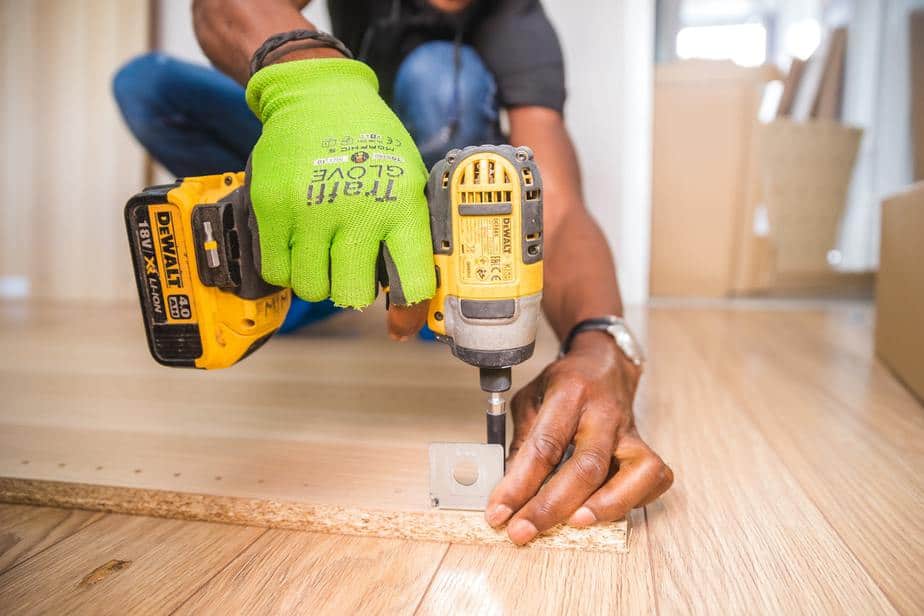
Add Mass to the Door
Most internal doors have a hollow core, meaning there is very little mass to absorb the sound, and so it passes straight through into the room. You can add mass to a door by attaching various soundproofing products designed to absorb and dampen soundwaves.
Interlocking foam tiles
Most commonly used in recording studios, these foam tiles come in varying densities, shapes (most common being the classic egg box style) and prices. The old saying “you get what you pay for” definitely applies, with the most expensive types generally offering the best soundproofing performance levels.
They can be easily fixed to the door surface with either adhesive or screws.
These tiles can be purchased at most music stores. But, although they are effective, they may look out of place anywhere other than in a professional sound recording room.
Mass Loaded Vinyl (MLV) barrier
Again, this is a material used in the music industry. It can be purchased from music stores on a roll, in various grades or thicknesses, depending on the soundproofing performance required.
MLV can be cut to size with a craft knife and fixed to the door with a suitable adhesive for a smooth finish, although this may be more difficult to achieve with a moulded style door.
This is another product that puts function above aesthetics, and so may appear a little odd outside of a recording studio.
Soundproof blanket
Soundproof blankets are generally hung on door surfaces with hooks.
Typically made from fibreglass, these heavy duty blankets have an industrial look and would not be to everybody’s taste in a home or office environment, but do offer excellent soundproofing performance.
As they are not permanently fixed, they can be taken down when not required.
All three of the above methods of adding mass have similar pros and cons:
Pros:
- Very effective soundproofing properties
Cons:
- Can look out of place in a home or work environment
- Not a full door soundproofing solution
Fit a Vigor Acoustic Door
While some of the above soundproofing methods can be effective, it is likely you would need to use a few of these methods in parallel to achieve a decent level of soundproofing. The performance may be acceptable, but it probably wouldn’t be very easy on the eye!
A Vigor Acoustic Door is specifically designed to stop the passage of sound entering a room through its solid core.
When installed by one of our experienced craftsmen as a doorset (door pre-fitted perfectly into a frame), the batwing seal and optional automatic drop seal make for a high performing, all-in-one door soundproofing solution.
Depending on your soundproofing requirements, Vigor offers Acoustic Doors with a range of decibel ratings, right up to 45dB.
Standard sizes and styles are available, or you could contact us about our custom offerings that make a beautiful addition to any environment.
By adding an optional moralt core, a Vigor acoustic door can also resist fire as well as sound!
Pros:
- Fantastic soundproofing properties – up to 45dB!
- Batwing and optional drop seal means no leaky gaps
- Custom designs available to suit your needs
- Optional moralt core resists fire and noise
- Excellent thermal properties, reducing your heating bill
Cons:
- Represent the largest investment of soundproofing methods detailed
So if you’re looking for a better night’s sleep, a more productive day at the office or a more peaceful life in general, contact us to learn more about how Vigor can help you achieve greater levels of wellbeing – we would love to hear from you!
